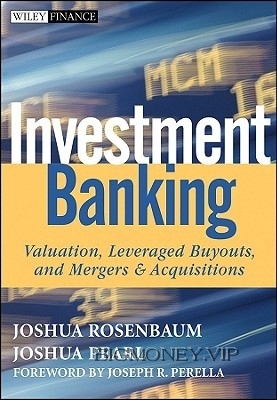Investment Banking: Valuation, Leveraged Buyouts, and Mergers and Acquisitions by Joshua Rosenbaum and Joshua Pearl

PART One
Valuation
Valuation
CHAPTER 1
Comparable Companies Analysis
Comparable companies analysis (“comparable companies” or “trading
comps”) is one of the primary methodologies used for valuing a given focus
company, division, business, or collection of assets (“target”). It provides a
market benchmark against which a banker can establish valuation for a
private company or analyze the value of a public company at a given point
in time. Comparable companies has a broad range of applications, most
notably for various mergers & acquisitions (M&A) situations, initial public
offerings (IPOs), restructurings, and investment decisions.
The foundation for trading comps is built upon the premise that similar
companies provide a highly relevant reference point for valuing a given
target due to the fact that they share key business and financial
characteristics, performance drivers, and risks. Therefore, the banker can
establish valuation parameters for the target by determining its relative
positioning among peer companies. The core of this analysis involves
selecting a universe of comparable companies for the target (“comparables
universe”). These peer companies are benchmarked against one another and
the target based on various financial statistics and ratios. Trading multiples
are then calculated for the universe, which serve as the basis for
extrapolating a valuation range for the target. This valuation range is
calculated by applying the selected multiples to the target's relevant
financial statistics.
While valuation metrics may vary by sector, this chapter focuses on the
most widely used trading multiples. These multiples—such as enterprise
value-to-earnings before interest, taxes, depreciation, and amortization
(EV/EBITDA) and price- to-earnings (P/E)—utilize a measure of value in
the numerator and a financial statistic in the denominator. While P/E is the
most broadly recognized in circles outside Wall Street, multiples based on
enterprise value are widely used by bankers because they are independent
of capital structure and other factors unrelated to business operations (e.g.,
differences in tax regimes and certain accounting policies).
Comparable Companies Analysis
Comparable companies analysis (“comparable companies” or “trading
comps”) is one of the primary methodologies used for valuing a given focus
company, division, business, or collection of assets (“target”). It provides a
market benchmark against which a banker can establish valuation for a
private company or analyze the value of a public company at a given point
in time. Comparable companies has a broad range of applications, most
notably for various mergers & acquisitions (M&A) situations, initial public
offerings (IPOs), restructurings, and investment decisions.
The foundation for trading comps is built upon the premise that similar
companies provide a highly relevant reference point for valuing a given
target due to the fact that they share key business and financial
characteristics, performance drivers, and risks. Therefore, the banker can
establish valuation parameters for the target by determining its relative
positioning among peer companies. The core of this analysis involves
selecting a universe of comparable companies for the target (“comparables
universe”). These peer companies are benchmarked against one another and
the target based on various financial statistics and ratios. Trading multiples
are then calculated for the universe, which serve as the basis for
extrapolating a valuation range for the target. This valuation range is
calculated by applying the selected multiples to the target's relevant
financial statistics.
While valuation metrics may vary by sector, this chapter focuses on the
most widely used trading multiples. These multiples—such as enterprise
value-to-earnings before interest, taxes, depreciation, and amortization
(EV/EBITDA) and price- to-earnings (P/E)—utilize a measure of value in
the numerator and a financial statistic in the denominator. While P/E is the
most broadly recognized in circles outside Wall Street, multiples based on
enterprise value are widely used by bankers because they are independent
of capital structure and other factors unrelated to business operations (e.g.,
differences in tax regimes and certain accounting policies).




